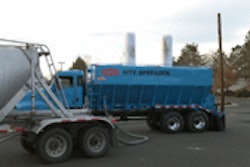The Federal Highway Administration (FHWA) has updated the way it calculates annual vehicle miles travelled (VMT) to ensure what the agency says “more accurately captures key transportation data.”
VMT refers to the number of miles vehicles travel over a given time period, and is routinely used to measure traffic on America’s roads and bridges and to calculate important statistics including traffic fatalities, fuel efficiency and air quality.
The new methodology does not affect how the federal gas tax is calculated and will not impact Highway Trust Fund (HTF) revenue or how FHWA distributes highway funds to states.
In 2010, the number and rate of traffic fatalities fell to the lowest levels since 1949, despite a significant increase in the number of miles Americans drove during the year. This new methodology has no effect on overall fatality numbers.
“We regularly review and assess all our data programs to ensure we are using the best available information,” said FHWA Administrator Victor Mendez. “This is a good example of how we’re able to develop better ways of reporting critical information.”
In the last decade, states have dramatically improved the way they collect travel data thanks to improved technical equipment for counting and classifying vehicles, better federal guidance on how to gather the information, and a move by FHWA and the National Highway Traffic Safety Administration (NHTSA) in 2007 to mandate states report data on motorcycle travel.
Simultaneously, the discontinuation of the Vehicle Inventory and Use Survey (VIUS) in 2002-which was previously collected by the Department of Labor and used to benchmark vehicle miles travelled-made it critical to look to other, improved data collection methods. The new methodology uses more consistent, complete data gathered directly from the states and ensures more accurate calculations for VMT by vehicle type.
While the revised approach doesn’t impact annual VMT overall, it does change VMT figures for specific vehicle types. For example, VMT for light duty passenger vehicles is lower, resulting in a slightly higher fatality rate. VMT for motorcycles, buses and large trucks are all higher, resulting in lower fatality rates.









